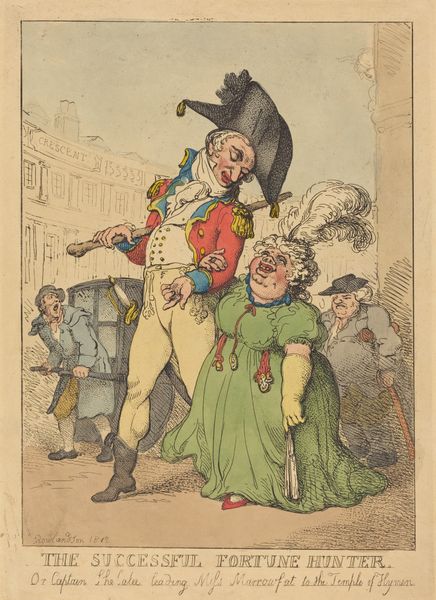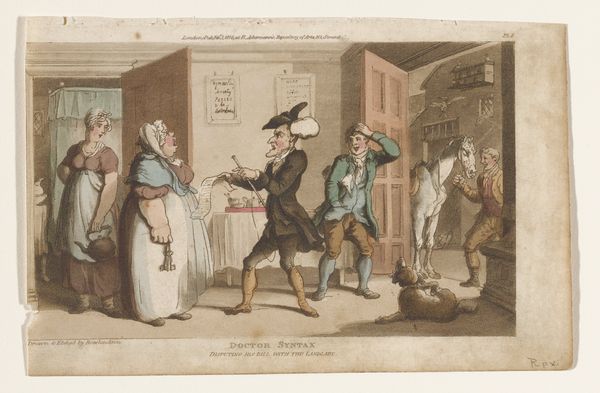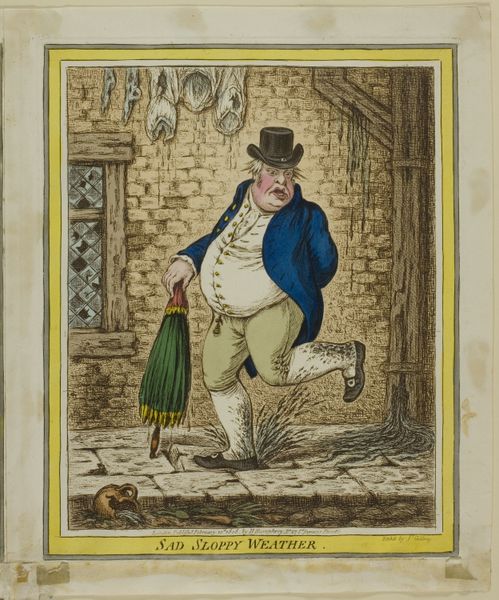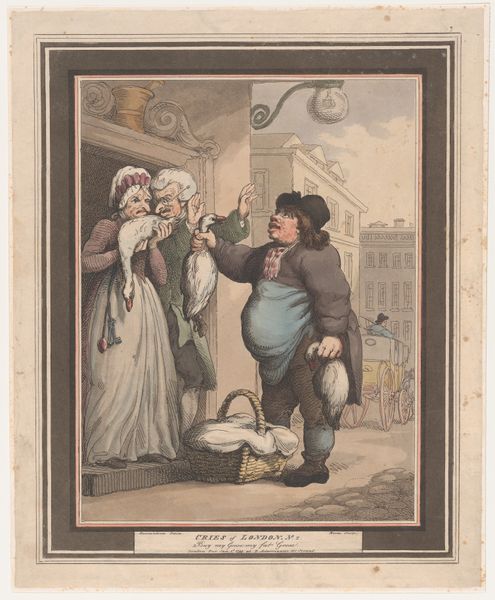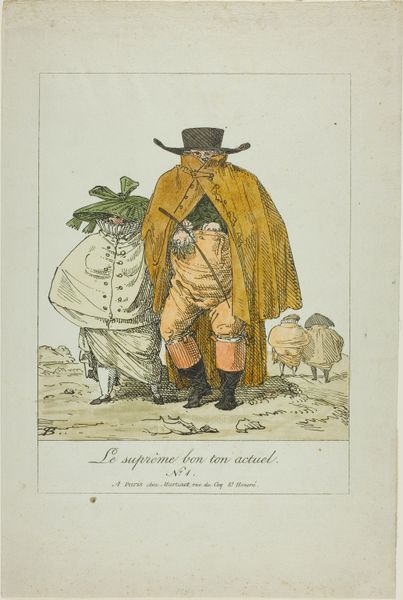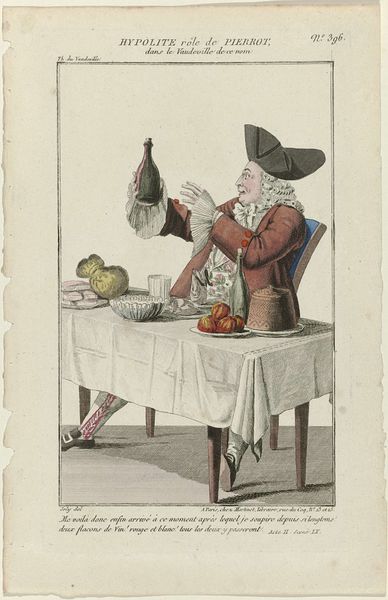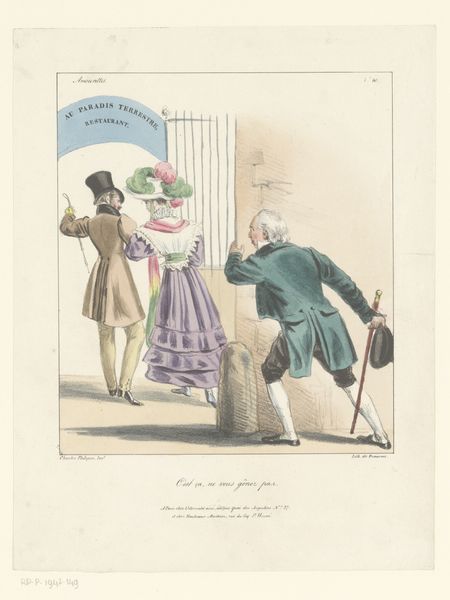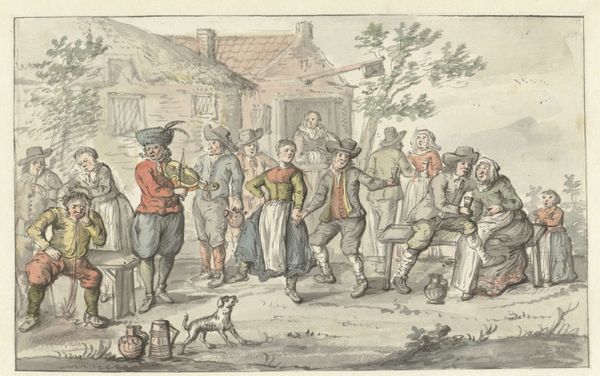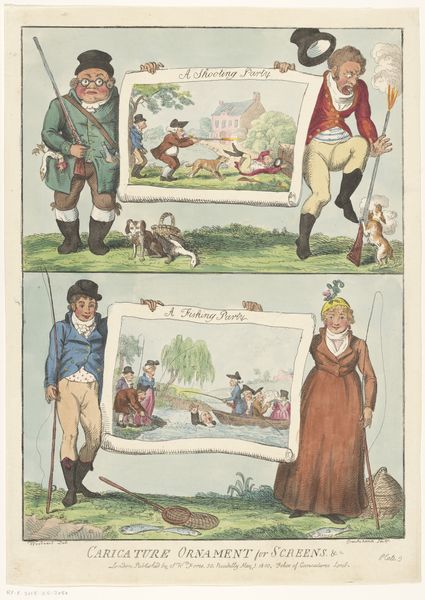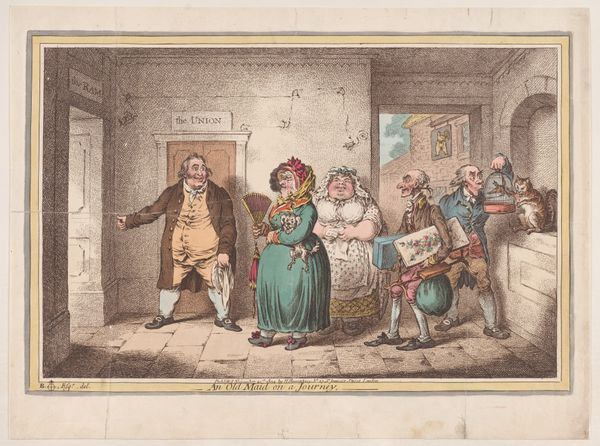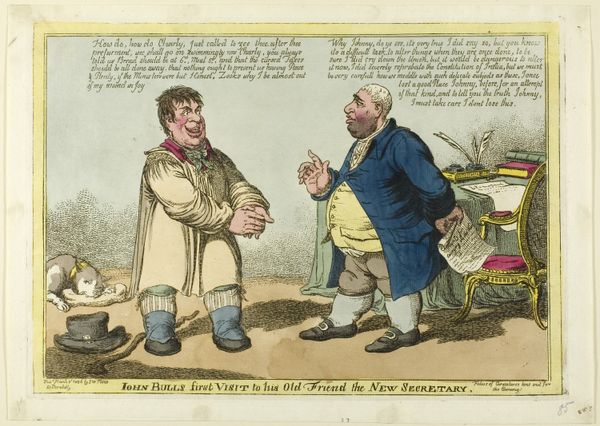
Graanhandelaar Johan Eymer voor de Korenbeurs van Amsterdam 1774 - 1833
0:00
0:00
drawing, watercolor
#
portrait
#
drawing
#
watercolor
#
coloured pencil
#
genre-painting
#
watercolor
Dimensions: height 120 mm, width 120 mm
Copyright: Rijks Museum: Open Domain
Editor: This watercolor and colored pencil drawing, "Grain Merchant Johan Eymer before the Amsterdam Stock Exchange" depicts exactly that! Painted somewhere between 1774 and 1833 by Jacob Smies, it strikes me as almost celebratory, maybe even a little satirical. What can you tell me about how society might have influenced its creation? Curator: Indeed! It's tempting to read it as celebratory, but remember this period in Amsterdam. Consider the context: the late 18th century witnessed growing social and economic tensions. Smies positions Eymer, likely a prominent figure, directly in front of the stock exchange, a potent symbol. Editor: So, those bags overflowing with something –grain, perhaps?–and his posture... could it be more than just celebration? Curator: Precisely. Eymer's stance, almost triumphant with wine glass in hand, might be interpreted as commentary on the power of the merchant class within the Dutch Republic. The composition subtly critiques the increasing influence of commerce on society. How do you perceive the symbols above his head – the lion and the justice scale? Editor: I noticed them but didn't quite understand their purpose. Are they symbols of the city or related to Eymer? Curator: They represent the city and the civic virtue. But look closer: are they straightforward symbols of stability, or perhaps ironic commentary given the man and the sacks of grain? What is the role of that golf club and ball? The painting's strength lies in its ambiguous depiction of this individual against Amsterdam’s political backdrop. Editor: That’s fascinating. It’s less straightforward than I initially thought, and much more complex. Curator: Exactly. The artwork prompts us to consider the social role of wealthy merchants and the political implications of commerce in 18th-century Amsterdam. Editor: I never would have looked beyond the surface without your perspective. Curator: And I may have dismissed this painting if I didn’t engage in dialogue with you. Thanks.
Comments
No comments
Be the first to comment and join the conversation on the ultimate creative platform.
